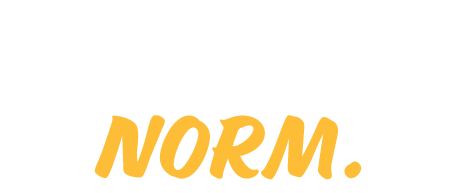Customizable Site Navigation
Top Navigation
Every site you create in the CMS allows unique navigation that will help organize your content. As you develop customization, try to keep your top level navigation to no more than eight navigation words or buckets across. Keep in mind that if your words are long, you'll impact space availability. Also, just because you have space for a lot of navigation words, doesn't mean you have to use up all the space provided. Take this site for example. There are only two "buckets" and everything is filed into those two subsections.
In addition to putting navigation words up top, you can also include a call to action, like "apply," or add social media icons for your department or college. Every page footer has the university-wide social media icons, but think about level of importance. Is your priority recruiting applicants, or engaging them on your social media? This choice can be made by page throughout your site too. You may want to place your "apply" button on the homepage or index page for your master section, then add social icons in subsequent pages.
Sidebar Navigation
If you aren't able to fit or organize your page within the top navigation, a right-hand navigation offers a second option. This option is turned on in page properties and formatted by page, not site-wide. Remember though, when you turn on the side navigation, you're limiting the size of content rows 1-3 to smaller width.
An instance where side navigation would be useful is if you have a specific topic with a lot of other sub-topics that just won't fit within top navigation.
Breadcrumbs
As you build pages, your breadcrumbs will automatically be created based on how you set up your master section or site. If you need to change your site's name after you've created your master section, you'll need to edit your props file.

